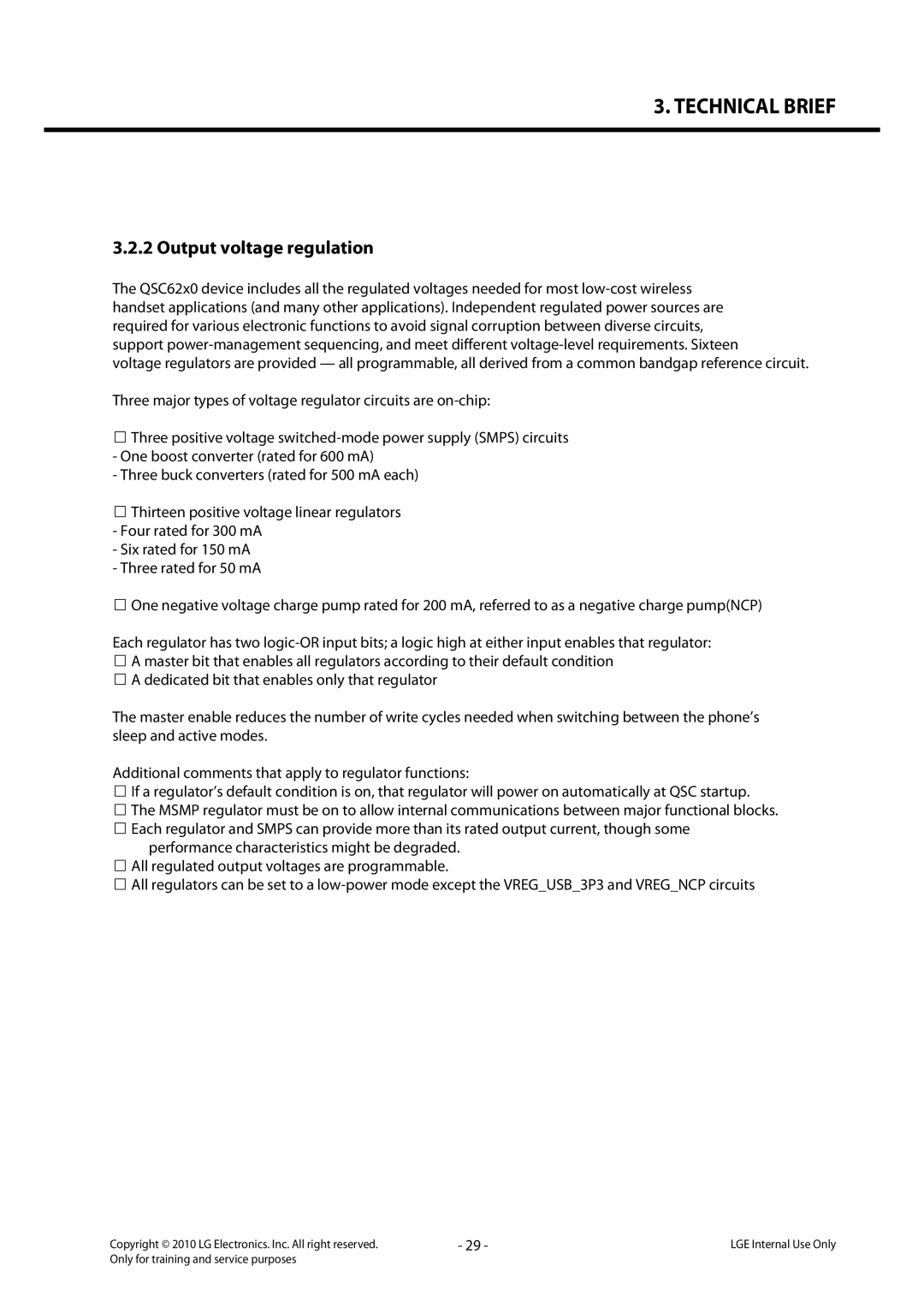3. TECHNICAL BRIEF
3.2.2 Output voltage regulation
The QSC62x0 device includes all the regulated voltages needed for most
voltage regulators are provided — all programmable, all derived from a common bandgap reference circuit.
Three major types of voltage regulator circuits are
Three positive voltage
-One boost converter (rated for 600 mA)
-Three buck converters (rated for 500 mA each)
Thirteen positive voltage linear regulators
-Four rated for 300 mA
-Six rated for 150 mA
-Three rated for 50 mA
One negative voltage charge pump rated for 200 mA, referred to as a negative charge pump(NCP)
Each regulator has two
A dedicated bit that enables only that regulator
The master enable reduces the number of write cycles needed when switching between the phone’s sleep and active modes.
Additional comments that apply to regulator functions:
If a regulator’s default condition is on, that regulator will power on automatically at QSC startup. The MSMP regulator must be on to allow internal communications between major functional blocks. Each regulator and SMPS can provide more than its rated output current, though some
performance characteristics might be degraded. All regulated output voltages are programmable.
All regulators can be set to a
Copyright © 2010 LG Electronics. Inc. All right reserved. | - 29 - | LGE Internal Use Only |
Only for training and service purposes |
|
|
